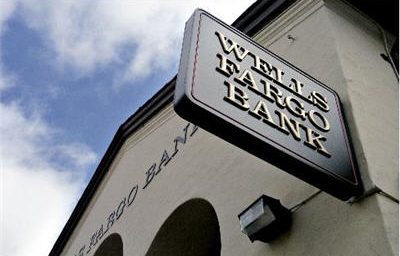Geithner Plan: TARP 2.0?
Tim Geithner takes to the pages of WSJ to flesh out his Plan for Bad Bank Assets.
Our new Public-Private Investment Program will set up funds to provide a market for the legacy loans and securities that currently burden the financial system.
The Public-Private Investment Program will purchase real-estate related loans from banks and securities from the broader markets. Banks will have the ability to sell pools of loans to dedicated funds, and investors will compete to have the ability to participate in those funds and take advantage of the financing provided by the government.
The funds established under this program will have three essential design features. First, they will use government resources in the form of capital from the Treasury, and financing from the FDIC and Federal Reserve, to mobilize capital from private investors. Second, the Public-Private Investment Program will ensure that private-sector participants share the risks alongside the taxpayer, and that the taxpayer shares in the profits from these investments. These funds will be open to investors of all types, such as pension funds, so that a broad range of Americans can participate.
Third, private-sector purchasers will establish the value of the loans and securities purchased under the program, which will protect the government from overpaying for these assets.
The new Public-Private Investment Program will initially provide financing for $500 billion with the potential to expand up to $1 trillion over time, which is a substantial share of real-estate related assets originated before the recession that are now clogging our financial system. Over time, by providing a market for these assets that does not now exist, this program will help improve asset values, increase lending capacity by banks, and reduce uncertainty about the scale of losses on bank balance sheets. The ability to sell assets to this fund will make it easier for banks to raise private capital, which will accelerate their ability to replace the capital investments provided by the Treasury.
To my non-economist mind, that sounds eerily remniscient of the Troubled Assets Relief Program (TARP), the $700 billion plan passed last October to prop up the frozen financial system by buying, well, troubled assets. Granting, arguendo, that the Bush administration, which ran the first part of TARP, was evil and incompetent and the Obama administration is all sweetness, light, and omniscience, why would this work any better the second time around?
I know remakes are all the rage but usually they involve movies that 1) were successful at the box office and 2) were made long enough ago that teenagers haven’t already seen them. By contrast, TARP was a veritable Ishtar and is barely out on DVD.
The economist mind of Brad DeLong leads him to support the package, given the alternatives. The John Bates Clark Medal and Nobel Prize-winning economist mind of Paul Krugman thinks this is too little, too late. This makes DeLong nervous but not enough so to change positions.
DeLong offers an amusing but obviously incomplete list of Four Groups of People into which the world is divided. For example, neither Krugman nor I fit into any category. He also offers a handy dandy Geithner Plan FAQ. Krugman thinks it’s a nice try but ignores some salient downsides.
This point, especially, strikes me as right:
[I]t’s immediately obvious, if you think about it, that these funds will have skewed incentives. In effect, Treasury will be creating — deliberately! — the functional equivalent of Texas S&Ls in the 1980s: financial operations with very little capital but lots of government-guaranteed liabilities. For the private investors, this is an open invitation to play heads I win, tails the taxpayers lose. So sure, these investors will be ready to pay high prices for toxic waste. After all, the stuff might be worth something; and if it isn’t, that’s someone else’s problem.
Or to put it another way, Treasury has decided that what we have is nothing but a confidence problem, which it proposes to cure by creating massive moral hazard.
That doesn’t sound like a good idea.
Update (Alex Knapp) Regarding the moral harzard of TARP 2.0, I believe that John Cole has put it best:
If this were a medical emergency, it appears it would look something like this:
The Illness– reckless and irresponsible betting led to huge losses
The Diagnosis– Insufficient gambling.
The Cure– a Trillion dollar stack of chips provided by the house.
The Prognosis– We are so screwed.
That’s about right.
Update (Steve Verdon): Maybe we can call them Patriot Loans or Big Penis Loans. I’d like to note that I was noting this possible policy several weeks ago. In other words, Geithner is going back to the original Paulson Plan.
As for James’ question as to why this would work this time around it could be argued that the original Paulson Plan was never implemented. The TARP funds basically became a ginormous slush fund that was given or forced on financial institutions. Forced for those financial institutions that are still sound and didn’t need a bailout. Why? Well if the slush fund gave money only to troubled financial institutions then you’d know precisely what financial institutions were troubled and many investors might be inclined to go ahead and dump those stocks now rather than latter. Nothing like having your own government pull the wool over you eyes.
I do have to admit that I find it amusing that now that it is “their guy” (i.e. Obama) who is making this pitch Brad DeLong likes the plan and Krugman merely thinks it is too little too late. I’d be curious to know their initial views on the plan back when it was the Paulson Plan not the Fluffy Bunny Loan Program.






This topic is above my pay grade…but in my travels of the interweb this weekend…I didn’t see anybody that had anything good to say about this….now what?.
As I noted in my over-the-weekend post on the initial reactions, it’s not just people toeing the Republican line and the uninformed who are opposing Geithner’s plan. It’s nearly everybody who’s looked at it with the exception of Brad DeLong.
Among the alternatives that suggest themselves are:
– it takes a God-like intellect of the sort that Dr. DeLong possesses to understand the sublimity of Geithner’s plan. Leave it to the experts, i.e. Brad DeLong and Tim Geithner (and ignore the rest of the experts)
– Hey, give the kids a chance! Maybe they can produce a Broadway show in that barn.
– if Dr. DeLong expresses skepticism now he might have to acknowledge that his early assessments of the chances of the Obama Administration were wrong
It is very much in concert with the Bush admin policies. The only way I would dissent from the notion that it is TARP 2.0 is that as far as I understand what actually happened, the government didn’t actually use TARP 1.0 to directly deal withe toxic assets themselves (despite the initial promise to do so), but instead used them to prop up various institutions.
Dr. Taylor is correct TARP 1 didn’t do much as far as relieving banks of devalued assets (notice I will not use the word toxic since these assets have real value).
According to Larry Kudlow there is some sort of an agreement between the SEC and FASB to adjust the rules concerning valuing assets like these at “mark to market”. Apparently it’s a valuation based on discounted cash flow. That would be a very reasonable way to value mortgage backed securities for regulatory purposes and would immediately prop up bank balance sheets. The problem in my eyes is why wasn’t this done a year ago when it could have headed off much of the problem? Plus this change doesn’t cost a thing.
What a surprise it would be to find that simple reporting regulations that did not keep up with new types of markets and securities be the root of the problem.
Last year’s TARP was initially pushed as buying “distressed securities” so banks could start lending again. But in fact they were unable to lend because of the imposition of mark-to-market, and FDIC rules that forbid banks from lending once their net assets become negative.
The plan to buy “toxic assets” was abandoned, however. It never happened. Instead, the federal government “injected liquidity” in exchange for direct equity stakes in banks (which was the goal all along).
But that didn’t work, so the feds are going back to the original plan
It seems we are in a situation where all plans are terrible. They might be bad with just a bad economy but bad politics seem to be added in.
I say seem, because this is one of those opaque moments. The Fed and Treasury might know that things are even worse than they seem, and might be “pulling every lever” again. Or, they could be greasing the Wall Street under that cover.
I almost wonder if I’d prefer a slower recover, and a stabilization effort right now, rather than a forced recovery … but speaking of opaque again, maybe this all still is panicked stabilization.
Well, to be fair, Congress and the Obama administration seem to be fond of opaqueness. If you like the opaqueness of Son of TARP, you’re going to love Card Check.
I’m curious, does anyone think President Obama could pass an Econ 101 Final?
If Mr. Verdon had taken the time to read what Krugman has actually said about the plan he would know that Krugman has been a vehement critic of the plan from the very beginning – and not just because it is too little too late.
Whether that is an indication that the plan is useless is of course a different question.
I think James is severely understating Krugman’s negative reaction to this plan, considering that he just wrote an entire column about how it is a bad idea, and he’s made several blog posts about how it is not only a bad idea, but one that could prevent good ideas from being used to save the financial sector.
Well, except for the market.
With the DOW approaching 8000 again, you have to wonder when Republicans are going to start jumping out of windows…
So, anjin-san, tell us what the stock exchanges were saying today.
The lesson: don’t put too much stock into a one-day rally.